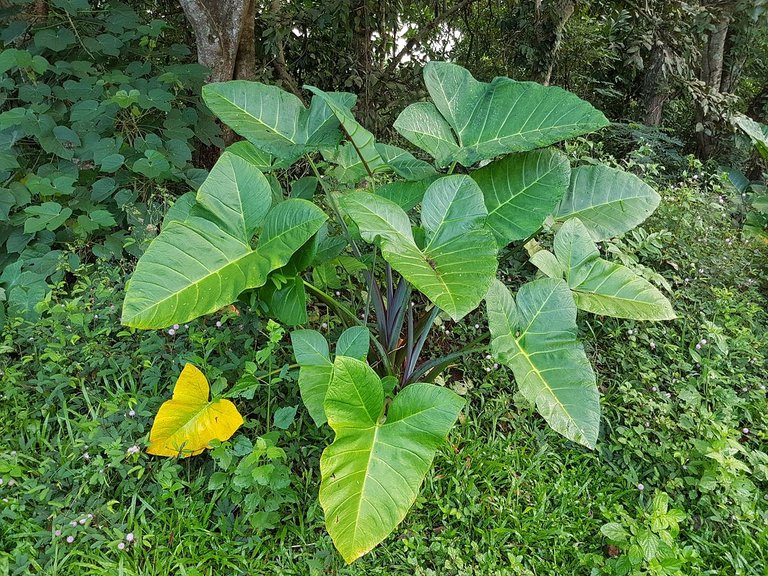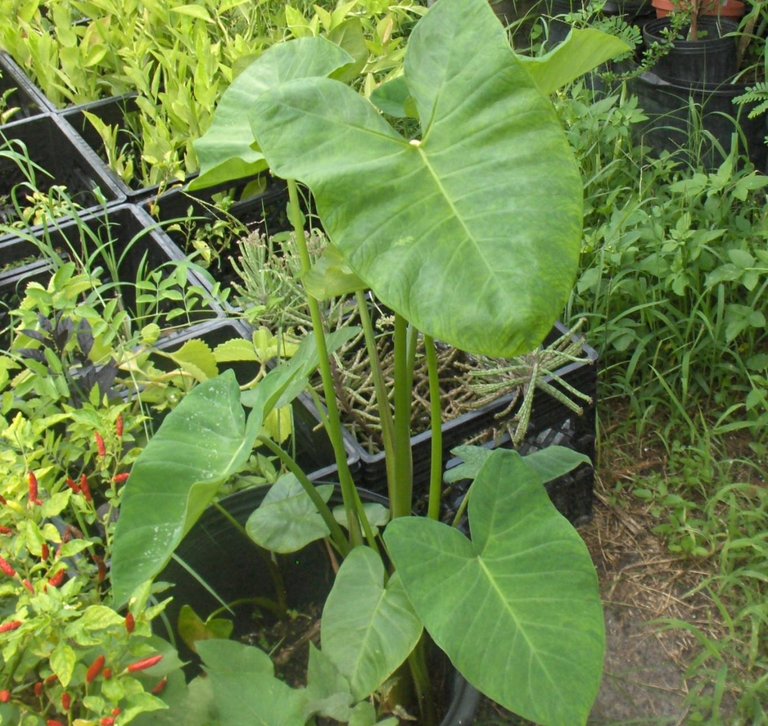I had already mentioned that the ocumo belongs to the family of edible Araceae, which includes the genera: Colacasia, Xanthosoma, Alocasia, Cyrtosperma and Amorphohalllus, herbaceous, succulents that reach a height of 1-3 meters, without aerial stem. The central stem is ellipsoidal, known as corm, rich in carbohydrates (18-30% on a fresh basis).



▶ The corm is a seedling whose organ of agronomic interest is in the root, commonly known as sweet potato (botanically called corm), which is a modified subway stem that develops very rapidly, taking a cylindrical shape.

▶ Credits: treasurecoastnatives. – [Image of Public Domain]
≕ I invite you to stay tuned and read my next contribution ≔
This is where a large amount of nutrients, such as carbohydrates, are stored. From the central corm develop lateral cormels covered with fibrous scales.
The color of the pulp is usually white, but there are also clones colored to purplish. Internally the corm is divided into the cortical zone and the central cylinder.
The former is narrow, compact in appearance, and consists of isodiametric cell parenchyma with a high starch content. In the central cylinder the basic tissue is parenchyma, but of more irregular and thin-walled cells, consisting mainly of starch.

These characteristics of high starch, mineral and vitamin contents make malanga corms a source of highly digestible nutritious food. Vascular bundles, mucilage channels and calcium oxalate raphides are also located in the central cylinder.
NOTE: Reference material.
Preserve and don't disturb!🙏👍